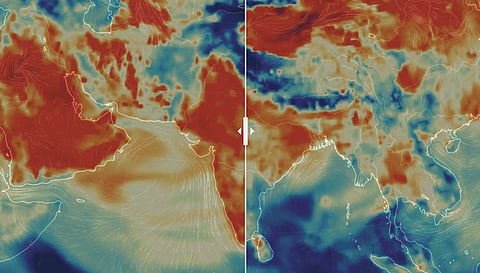Why Southasia’s air is cleaner this Earth Day
In mid-March 2020, social-media posts began flagging the return of wildlife to public spaces deserted due to the spread of COVID-19. Swans, dolphins and elephants drunk on corn wine received millions of likes before being debunked. Footage of an endangered Malabar civet on a street in Kozhikode was shared over a thousand times before an Indian Forest Service officer pointed out it was actually a small Indian civet.
Although there was much discussion about the fake videos and the whimsical responses they triggered, the underlying issue they reflected – our desire to see a reduction in environmental harm – was not adequately discussed. The common intuition, that the air is cleaner, and the environment better off as a result of reduced economic activity, was rarely evaluated.

